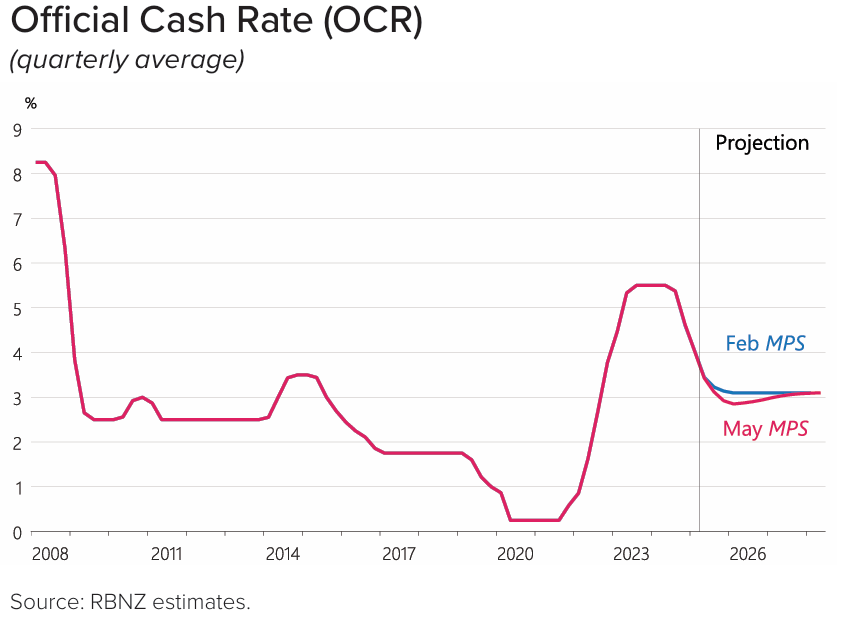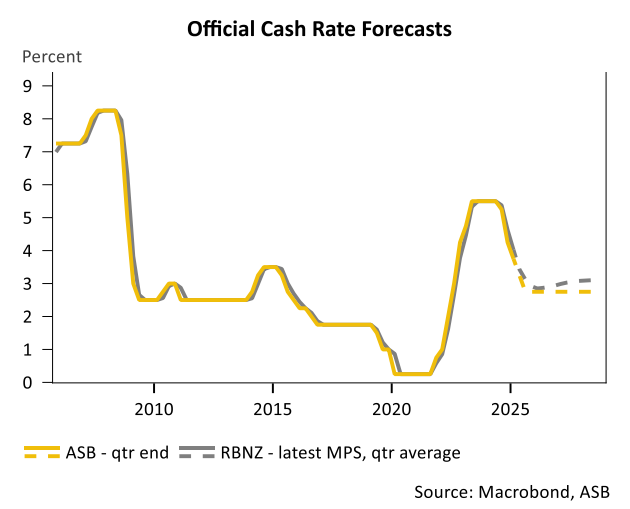Last week, the Reserve Bank of New Zealand lowered the official cash rate (OCR) to 3.25%, down 2.25% from the recent peak.
The vote in favour of cutting rates was overwhelming, with five members voting for and only one against.
The Reserve Bank’s guidance, presented below, suggests that the OCR will bottom at around 2.75%.

The Reserve Bank has assumed that the overall impact of the trade war will be to dampen New Zealand inflation pressures over the medium term, although the outlook is uncertain:
“Our central projection assumes that higher tariffs and uncertainty will result in weaker economic activity in New Zealand, and lower inflationary pressure”, the May Monetary Policy Statement reads.
“Global trade developments and higher uncertainty are assumed to be disinflationary for New Zealand, meaning that additional monetary policy easing is required”.
“Underlying inflationary pressures are assumed to ease as wage-and price-setters continue to adapt to a low-inflation environment. This allows interest rates to fall, supporting economic activity and contributing to a closing output gap and
headline inflation near the 2% target mid-point over the medium term”.
ASB agrees with the Reserve Bank’s reading of the situation.
“The RBNZ is certain that global growth will slow as a result of the tariffs. But the RBNZ is uncertain whether growth slows through a demand shock (tending to be disinflationary) or a supply shock (tending to boost inflation)”, ABS’s economics team wrote.
“A net supply shock means a higher OCR is needed (to handle stickier pricing pressure) while a net demand shock means a lower OCR is needed (to spur activity)”.
“Right now, it’s leaning more towards team ‘net demand shock’. That’s in line with our view”…
“We think the RBNZ has made the right decision in assuming that the US-sparked trade war will dampen NZ inflation pressures over the medium term with softer export incomes and activity the dominant influence”, ASB wrote.
ASB has forecast slightly higher inflation than the Reserve Bank, albeit still within its target range:

However, ASB also forecasts a slightly lower OCR than the Reserve Bank:

ASB believes “the pace and depth” of OCR cuts “remain tied to how people react to this year’s bump up in inflation and on the RBNZ firming up its confidence over just how NZ will be impacted by global events”.

